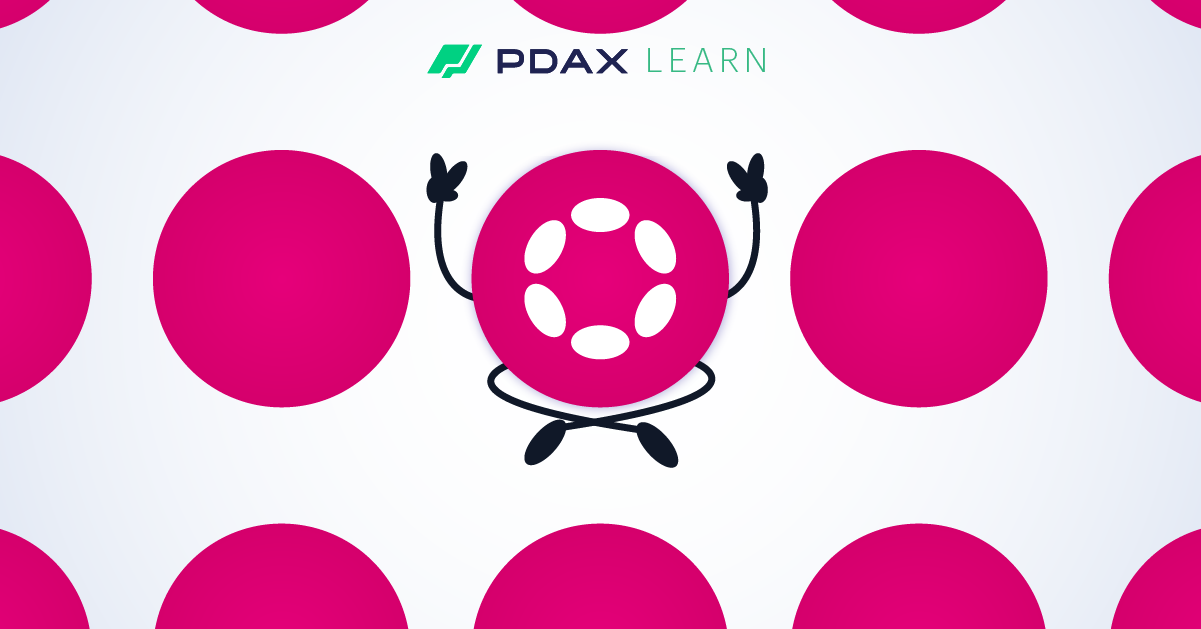Polkadot (DOT) is a unique blockchain being developed to address the problem of interoperability among different blockchains. To anyone who has been using crypto for a while, it should already be apparent that there are so many different blockchains currently being used, but which are mostly incompatible with one another. This often presents problems for users, for example–one can’t use their assets in one network for a decentralized application (dApp) which is running on another network.
Think of it like having an ATM card but you can’t find a machine that runs on the same interbank network so you’re left stranded and unable to cash out any money.
There are, however, a number of methods available to address interoperability with blockchains such as using “wrapped tokens” which are basically proxy tokens representing your assets for use in another network. But wrapped tokens only work for one particular token, and are not suited for the level of interoperability required to usher in a truly decentralized Web 3.0–which is pegged as the next-generation iteration of the internet itself.
What is needed would be a way for different blockchains to connect seamlessly and exchange data flows freely and securely, allowing different applications and tokens to function with one another. This is the idea behind Polkadot, which is being envisioned as a Layer-0 blockchain to connect all other blockchains, or–to become a “blockchain of blockchains”.
This is why Polkadot itself is funded by the Web3 foundation which is aiming to speed up the development of the Web 3.0 infrastructure.
How does Polkadot work?
Polkadot’s network architecture is composed of two main structures. First are what’s called as “parachains” which are like docking bays that other blockchains can connect to. The other is the main relay chain from which all parachains are connected to. To put it simply, all the blockchains that are connected to the parachain slots (currently there are 100) can connect to one another via the main relay chain–granting them true, large-scale interoperability.
Transferring data to and fro between different parachains are facilitated by validator nodes, which are required to stake a certain amount of Polkadot’s native cryptocurrency, “DOT”, to qualify for the job. These validator nodes follow a special Nominated Proof-of-Stake (NPoS) consensus protocol, wherein only validators that perform well and have earned the network’s “trust” are chosen for validating transactions.
What can you do with DOT?
The parachain slots themselves are auctioned off to networks who are interested in connecting to the Polkadot relay chain. Meanwhile, DOT holders can also use their DOT tokens to participate in the governance of the Polkadot ecosystem, with the power to vote on network updates and proposals, support blockchain projects they wish to be prioritized with a parachain slot, or disconnect blockchains deemed harmful to the Polkadot ecosystem.
Aside from governance, DOT can be staked to nominate a network validator and earn passive rewards. This can be done through a number of cryptocurrency exchanges and DeFi platforms, as well as directly through supported cryptocurrency wallets.
Tokenomics
DOT has a circulating supply of 1.1 billions tokens with a market cap of $7.2 billion as of August 2022. With no maximum supply, DOT is designed to be inflationary with a 10% increase rate annually according to the Polkadot website. This rate is maintained by a burning mechanism which removes unused tokens from circulation if they remain for too long in the network treasury.
Ready to start with crypto?
Start your trading journey with PDAX.
DISCLAIMER: The statements in this article do not constitute financial advice. PDAX does not guarantee the technical and financial integrity of the digital asset and its ecosystem. Any and all trading involving the digital asset is subject to the user’s risk and discretion and must be done after adequate and in-depth research and analysis.
About PDAX
PDAX is a BSP-licensed exchange where you can trade Bitcoin, Ethereum, and other cryptocurrencies directly using PHP!
Featured Posts
You might also like
MON (Monad) is now on PDAX!
PDAX
December 04, 2025
PDAX Learn: USDC on Arbitrum is now on PDAX
PDAX
December 01, 2025
Pump.fun’s PUMP token is now on PDAX! 🎈
PDAX
November 26, 2025
Aerodrome Finance’s AERO token is now on PDAX!
PDAX
November 12, 2025
